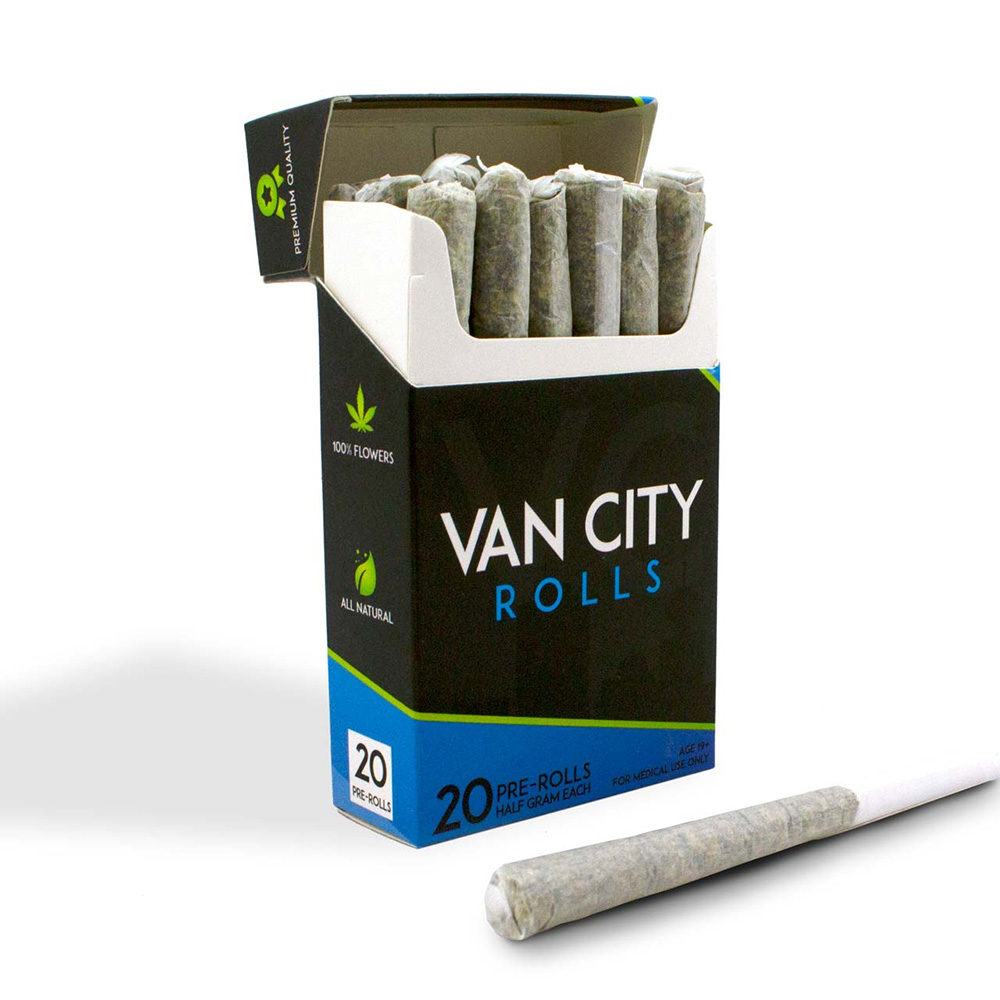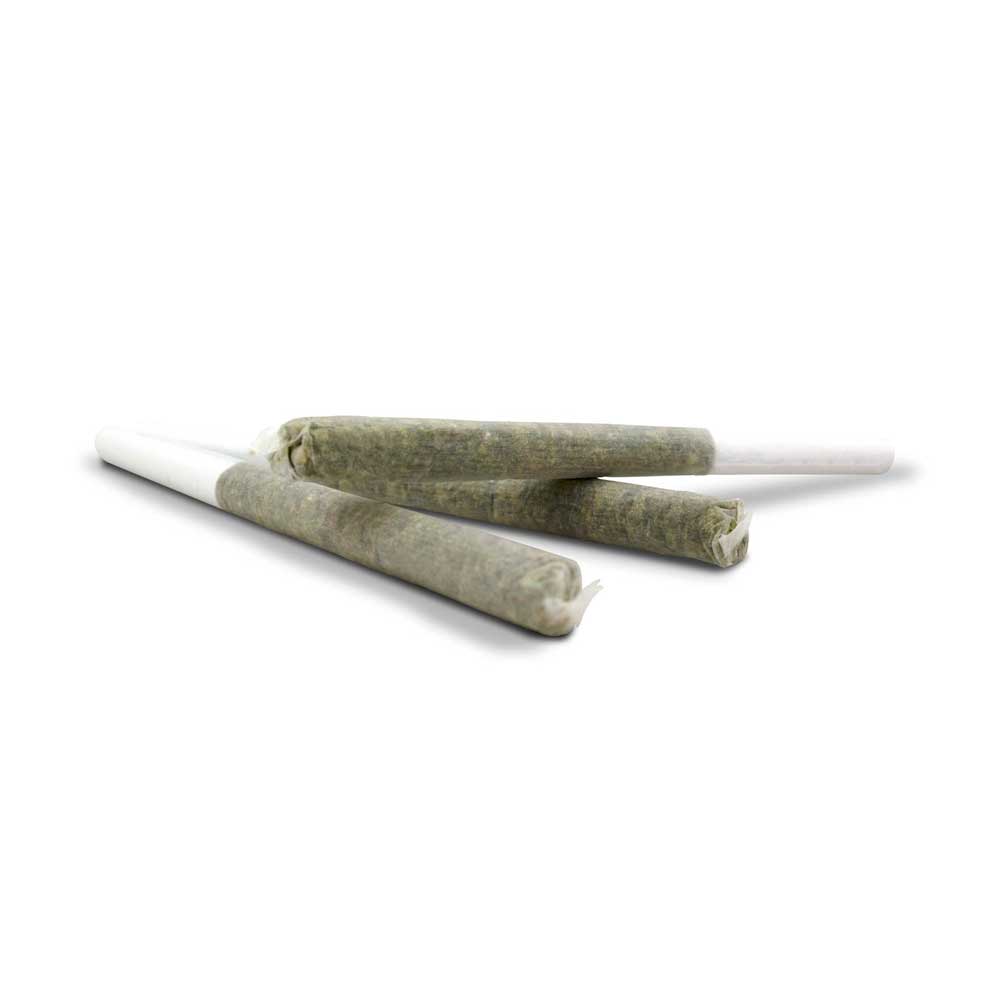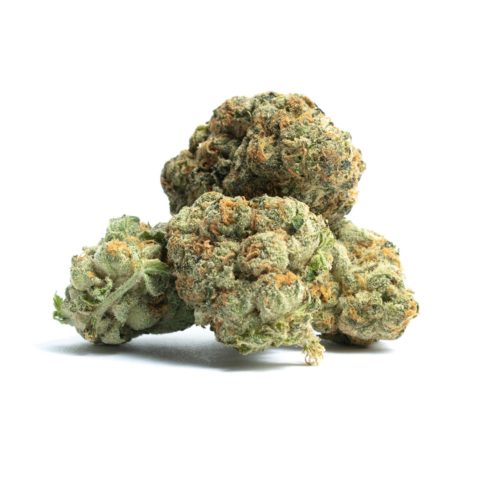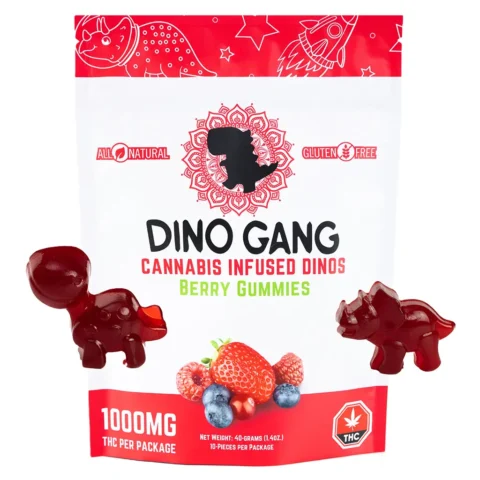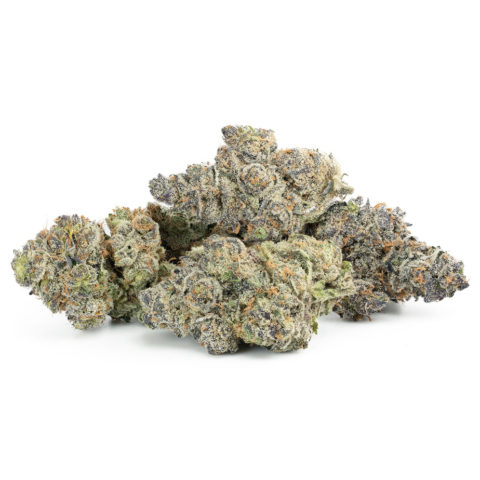Description
About Van City Rolls
These aptly named pre rolled gems by Van City Pre Rolls are produced in Canada’s cannabis hot bed in the Metro Vancouver region and come as 20 pre rolls to a pack. Sit back and picture yourself chilling in Stanley Park taking in the fresh ocean air and marveling at the majestic mountain landscape. These 20 pre roll packs offer all the benefits of smoking high quality BC bud without the hassle of rolling and conveniently tuck away in your pocket, purse, or bag.
About Harlequin
Harlequin is a CBD-rich strain whose popularity predated the recent wave of non-psychoactive medical CBD strains like Charlotte’s Web. Harlequin is the sativa-dominant product of several different landrace strains: 1970s favorite Colombian Gold, Thai and Swiss sativa landraces, and a Nepali indica variety. These patchwork genetics may account for the strain’s name — “harlequin” originally referred to the brightly-patterned costumes of traditional Italian clowns of the same name. Harlequin is approximately 75% sativa, although it lacks the characteristically strong cerebral sativa high due to the mitigating presence of CBD. The standard ratio of CBD to THC in Harlequin is 5:2. Cannabis lab Analytics 360 has measured samples of this strain at between 4% to 10% THC and 6% to 15% CBD. Harlequin has won multiple Cannabis Cup awards for its CBD content in both bud and concentrate form.
Harlequin has tight, dense buds of medium size. Its leaves are medium green with pistils that vary in color from orange to vivid red. Despite lower than average concentrations of THC, Harlequin is typically covered in sticky white trichomes. When properly cured, the buds smell musky with traces of tropical fruit underneath. The combusted flowers have a woody, earthy scent and taste of mango and citrus fruits when inhaled. The smooth smoke is not known to induce coughing, and it finishes with a rich, hashy aftertaste.
Because its THC content is so low, and because its high CBD counteracts the psychoactive effects of that THC, Harlequin is not likely to get the user particularly high. Any mental effects take the form of an uplift in mood, conferring a mellow mindset and allowing for some mild anxiety relief. Some users report an increased sense of focus or a shift in perspective, but just as frequently, they’re able to pull themselves out of this altered state and closer to sobriety.
Instead of a potent high, Harlequin is known to offer pain relief from both mild and chronic conditions. It can alleviate the aches associated with joint pain and stiffness. It can also have powerful anti-inflammatory properties, making it beneficial as a medication for fibromyalgia and neuralgic pain. Additionally, Harlequin can relieve moderate nausea. This strain allows for sustained mental focus without a heavy body stone — this makes it a versatile medicine that can be as easily used during the day or at night.
Harlequin is a clone-only strain, meaning that in order to cultivate it, prospective growers need to obtain clippings from a mature plant. These clones are often available at cannabis conventions and expos, or could be obtained from a fellow grower. Although several digital seed companies purport to sell packaged seeds of Harlequin, such claims should be regarded with suspicion, as the strain’s growers claim to have never released seeds.
Harlequin can be grown by newcomers or by those with significantly more cultivation experience. Outdoors, plants require a steady source of sunlight and temperatures between 70 and 80 degrees Fahrenheit. However, growers cultivating outdoors should watch out for environmental threats, as Harlequin is not particularly resistant to pests or to fungus. The strain is easily grown indoors, as its plants have a typically indica shape — they are squat and bushy, with strong lateral branching. Harlequin has an average yield, although its flowering nodes (or colas) are so dense and large that they may require stakes for support as plants enter the flowering stage. Indoors, plants flower within 9 to 10 weeks; if flowers are harvested after the 10 week period, THC content may increase so that it equals or exceeds the desired CBD content. Also, because its bud structure is so dense and prone to develop mold, Harlequin may require 3 weeks, rather than the typical 10 days, to properly.
The spread of medical and recreational cannabis legalization has brought new attention to CBD as an instrument of health. Charlotte’s Web, developed for a young epilepsy patient, has sparked international attention and even drawn families to Colorado, seeking treatment that doesn’t come with a high. And although Harlequin still has a tinge of THC and some associated psychoactivity, it’s still a medically potent strain, suitable for a range of conditions. Its uplifting but functional high allows the user to perform work, errands, and even exercise. Harlequin landrace heritage has given it genetic heartiness and stability, while selective breeding by cannabist botanists has boosted the valuable concentration of THC. Harlequin’s desirable properties have also been used to yield child strain Pennywise, another CBD-heavy (albeit indica-dominant) strain.

